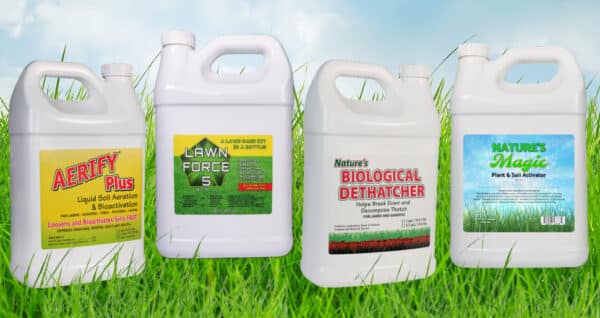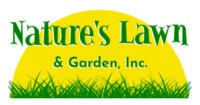The Best Fall Lawn Care Tips
You’ve probably heard us say this more than once, but it bears repeating: Fall is one of the most important seasons for lawn care! While many homeowners think of fall as the end of the gardening year and begin to neglect their yards, lawn pros see the fall as the beginning of lawn season, and do what they can to improve the lawn and soil quality at this time.
WHY FALL?
In the fall, especially in the North, lawns have the opportunity to re-build, repair, and thicken up after going through the stresses of summer. The lawn attempts to expand its root system at this time, digging in and getting to more of the soil nutrients. It also increases blade growth, making more carbohydrates (food) that are stored for spring and summer use. In the fall, conditions are usually more favorable for seeding too. The weather should be cool and moist, with less weed and disease pressure to contend with.
Top 6 Best Fall Lawn Care Tips and Products From the Pros at Nature’s Lawn and Garden
- FERTILIZE – Lawn Force 5
- Be sure to do an early fall fertilizing. In our lawn service business, we save our heaviest fertilizing of the year for the early fall. This stimulates growth and helps the grass send out tillers and runners to fill in thin spots. It also helps the grass produce the food that it stores to help it through the winter, and which gets it off to a good start in the spring. Our Lawn Force 5 is the perfect fertilizer to use for this. (Also available in Phosphorus-Free)
- AERATE – Aerify PLUS
- Focus on soil improvement. The goal of aeration is to get some air into the soil, and to loosen up clay and compaction. Aerify Plus is an organic liquid soil aerator that contains a soil penetrant to break apart tightly bonded soil particles and clay. This creates “space” in the soil, allowing roots, water, and oxygen to permeate. Once you get oxygen into compacted or clay soil, more beneficial, humus-building microbes will be able to survive.
- DETHATCH – Biological Dethatcher
- Handle any thatch that may have formed over the summer. Thatch is not just old grass clippings sitting on top of the lawn. Real thatch is a tightly matted barrier that could not be raked off without tearing up the lawn. The best way to reduce thatch is to get it to decompose. Biological Dethatcher is a liquid dethatcher treatment that has been formulated to generate and accelerate the decomposition of thatch in lawns. To fuel this process, our product contains high levels of thatch digesting Bacteria and Enzymes. These, along with naturally occurring soil organisms, will break down thatch and turn it into valuable humus.
- SEEDING – Nature’s Magic
- The early fall is the absolute best possible time to seed your lawn if you live in the north. There are many reasons to over-seed your lawn. Aside from thickening it up, you can introduce newer, more heat-, insect-, and disease-tolerant grass types. Get new grass seed established in the early fall and it will thicken further in the spring. You can seed any bare or thin areas now and up till early October.If your lawn does not have a thatch barrier, a simple over-seed can be done this way: spread seed over the existing grass and water heavily to work the seed down to the soil. Then keep the soil damp for a few weeks. A lot of this seed will take hold, especially if you spray our Nature’s Magic right after seeding.
- MOWING
- Practice seasonally appropriate mowing. Keep the grass fairly high into the early fall (unless your lawn is mostly bentgrass, which needs to be cut shorter). This will help the grass root deeper, thicken up, and build up food reserves. When the lawn’s growth begins to slow down, that is your signal to begin mowing shorter. Gradually lower the mowing height so it is 1 ½ inch high or less before winter. Bentgrass lawns can be cut even shorter. To help break down grass clippings into valuable humus, you can apply some Biological Dethatcher.
- LEAVES
- Keep leaves from matting up on the lawn! Too many leaves left on the lawn can cause the grass to dieback or rot, so be sure to rake up leaves if they tend to form a thick layer over your lawn. Leaves make for excellent compost though, so if you don’t feel like bagging, try dumping them around your shrubs and trees, or in your garden beds.
That’s all for now. Happy harvest season!



